“Hello, darkness, my old friend“ – some thoughts on Steve Tibbetts‘ „Close“

Steve Tibbetts‘ new album is sailing stars. It is a kind of shadow play, too. The love of life, the losses. It is glowing from start to end, with two, three explosions along the way. Things can explode in quietude, too, on this haunting melange of electric and acoustic guitars with discreet and, sorry to repeat myself, „glowing“ percussion every once in a while. A thousand miles away from an old hippie‘s shangrila. Hotel California has shut its doors.
The playing of the Minneapolis-based musician is instantly recognizable: it circles around small rhythmic-harmonic sound cells with all kinds of drone sounds and finest beats— and, breathtaking, though never forgetting to breathe: the silences, the minimal zero points, the moments of nothing lasting fractions of a second or two.
„CLOSE“ is like a dark Rothko painting on fire, in purely metaphorical and sensual ways. The tracklist reads like a Samuel Beckett poem. And, in regards to these invocations, I ask myself: how can something „noir“ like this be so elevating, so heartwarming?!
And now, a mood line, and a timeline with a twist:
Pharoah Sanders has made „TAUHID“, Jan Garbarek has made „DIS“, Van Morrison has made „VEEDON FLEECE“, Julian Priester has made „LOVE, LOVE“, Julie Tippetts has made „SUNSET GLOW“, David Darling has made „CELLO“, Laurie Spiegel has made „THE EXPANDING UNIVERSE“, Arve Henriksen has made „CHIAROSCURO“, Bill Callahan has made „APOCALYPSE“, Lambchop has made „SHOWTUNES“, and Steve Tibbetts has made „CLOSE“.
Glowing affairs all of them. Honestly, this album breaks my heart.
Michael Engelbrecht, Deutschlandfunk
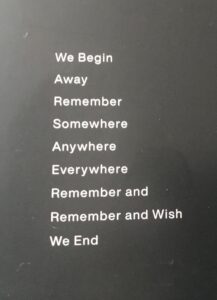
Steve speaking:
Steve Tibbetts: guitar, percussion, piano
Marc Anderson: percussion, gongs, handpan, loops
JT Bates: drumsGute Reise!
Click on the following line
to listen to the radio hour
with The Necks, Steve Tibbetts, Brian Eno, Robert Wyatt a.o.:
Part One – Of Ice and Fire
A form of language
The more he‘s alive, the more he‘s dying
(from Ludwig Berger‘s Crying Glacier) *
Meridian moon
(from Jan Bang / Arve Henriksen: After The Wildfire)* the vinyl runs with 45 rpm
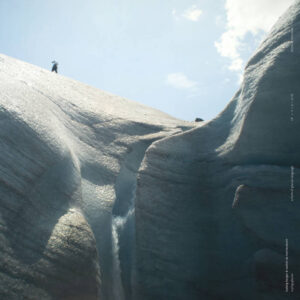
Part Two – Twilight Language
Away 3 (from Steve Tibbetts‘ Close)
We begin 3 (from Steve Tibbetts‘ Close)*
Warm running sunlight (from The Necks‘ Disquiet)
Away 1 (from Steve Tibbetts‘ Close)* „a small concert hall inside…“ – my 2018 interview with Steve Tibbetts

Part Three – Shades Of Blue, Shades of Green
Saltmarshe (from the Philip Jeck anthology „rpm“)
Sparrowfall 2 * (from Brian Eno‘s Music For Films, 1978)
The sight of the wind (from Robert Wyatt‘s Dondestan, 1991)
Shallow form (from Eno / Wolfe: Liminal)
Becalmed (from Brian Eno‘s Another Green World, 1975)* click on „Sparrowfall 2“ to listen to Brian Eno‘s memories on „Music For Films“

Auf‘s erste Hinschauen dachte ich an Fotografien von Gregory Crewdson – auch hier scheint vieles bis ins kleinste Detail arrangiert zu sein. Ist der Sternenhimmel überhaupt echt. Ist er! Der Clou ist, dass es sich um einen klassischen Schnappschuss handelt. Ich habe Steve Tibbetts natürlich auch gefragt nach diesem Bild, und ihm geschrieben, ein hinreissenderes Cover sei mir für diese Musik und ihre „twilight language“ kaum vorstellbar. „Fairytale“, „darkness“, „somewhere“, „anywhere“, „noir“, so flogen meine Assoziationen umher, auch, weil ich, neben den Klängen, schon die „tracklist“ kannte, die, nach dem Hören der Musik, für eine Extraportion Gänsehaut sorgten!
In regards to sequencing: 54 minutes and 38 seconds. To stick faithfully to the most rewarding sequence of tracks, i had to leave out pieces from these fantastic albums, old or new: Jeff Tweedy: Twilight Override / Lucrecia Dalt: A Danger to Ourselves / Meredith Monk: On Behalf Of Nature / David Darling: Cello.In regards to Eno / Wolfe (70 seconds of sound / soul / place searching)
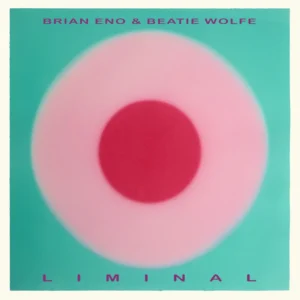
In regards to Jeff Tweedy: „It was novelist and critic John Berger who first posited that “calm is a form of resistance”. Who knows if Jeff Tweedy was channelling that sentiment while creating the gentle behemoth that is Twilight Override, but he has certainly responded to the maelstrom of paranoia and inhumanity unleashed by the second Trump term – what the Wilco frontman has dubbed “a bottomless basket of rock bottom” – with disarming composure, and a big batch of tunes for his fifth solo outing.“ (Fiona Shepherd, Uncut)

In regards to Steve Tibbetts:
one) „Steve speaks (1)“ („music philosphy“)
two) „Steve speaks (2)“ („twilight language“)
„At times I miss working in a record store. I miss the camaraderie of sullen, sneering record clerks. I miss hearing all the new releases, right out of the box. Closing up the store and going out to see Prince or Motörhead. Tom Smith was part of our crew working at the Wax Museum record store in Minneapolis. My daughter and I go visit Tom at the Electric Fetus record store at the end of every year. Tom has 10 albums ready that he thinks I will like. Laura Marling’s Once I Was an Eagle was in the stack some years ago. It stayed in my CD player for a long time. One long song. The same key. Repeating motifs and melodies. A trance. I could do that.“ (S.T.)

In regards to Philip Jeck: „Time, and the placement of time, is odd: as I type up this obituary, in a generic chain hotel bedroom, I do so to the sound of the first track from his 2015 album Cardinal album. Titled ‘Fleeing’, it fills the poorly-lit room with colour, anguish, hope and tension. The three minutes and seven seconds of the length feel like they could be both (i) forever and (ii) a mere gust of breeze at the window. On record or in performance, Jeck could juxtapose various emotions and – dare I say it – feelings. I distinctly remember him playing on one occasion and turning to a section which made me think, without warning: “Life can be pretty fucking dark sometimes, huh?” Yet I also recall how I also smiled at how beautiful this passing darkness was.“ (Dale Cornish, taken from his Philip Jeck orbituary, TheQuietus, 2024)
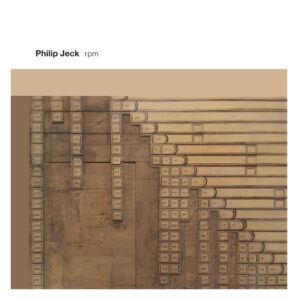
„Die Zeit und die Einordnung der Zeit sind seltsam: Während ich diesen Nachruf in einem Zimmer einer gewöhnlichen Hotelkette tippe, höre ich den ersten Titel von Philip Jecks Album Cardinal aus dem Jahr 2015. Der Titel „Fleeing“ erfüllt den schlecht beleuchteten Raum mit Farbe, Angst, Hoffnung und Spannung. Die drei Minuten und sieben Sekunden des Songs fühlen sich an, als könnten sie sowohl (i) ewig dauern als auch (ii) nur ein kurzer Windstoß am Fenster sein. Auf Platte oder bei Live-Auftritten konnte Jeck verschiedene Emotionen und – ich wage es zu sagen – Gefühle nebeneinanderstellen. Ich erinnere mich noch genau daran, wie er einmal spielte und zu einem Abschnitt kam, der mich ohne Vorwarnung denken ließ: „Das Leben kann manchmal verdammt düster sein, oder?“ Aber ich erinnere mich auch daran, wie ich darüber lächelte, wie schön diese vorübergehende Dunkelheit war. (Dale Cornish, übersetzt)

In regards to a certain passage of this hour: „Rejoyce“
Every album from this hour is a treasure trove. In my ears, and for heaven’s sake not in my ears only. Some have made history, some will make history, or do the „buried treasure game“. Much more important are the „stories“ that these albums “tell” us when we listen to them, mostly without words. Words: why words. East of words. The unspeakable comes into play. The storytellers, too. There’s a lot to rummage around here. There’s no replacement for listening. (m.e.)
P.S. In regards to more blue hours:

from left to right: Agharta / Love, Love / Big Map Idea / Ecstasy / Tauhid
“Safe Journey“ (2/10)
Auf seinem neuen Album „Close“, erzählt Steve Tibbetts, hätten sich die Titel der einzelnen Stücke geradezu von selbst geschrieben, und wirft einen Blick in seine Notizbücher. Ihr könnt Steve hören, wenn ihr auf die ersten zwei Stichwortzeilen „klickt“, unterhalb des Covers. Die dritte Zeile führt zu einem seiner „notebooks“ – old and new titles, so to speak. In other words: old and new dreams!
Ich hatte damals, 1983, nur sein ECM Debut „Northern Song“, das wie ein „klassisches ECM-Album“ produziert wurde, zusammen mit Manfred Eicher und Jan Erik Kongshaug, an zwei, drei Tagen in Oslo. An „Safe Journey“ arbeitete er hingegen, wie bei allen Nachfolgern, kleine Ewigkeiten, tagaus, tagein, in seinem Studio in St. Paul, Minnesota.
Dass die Musik von Steve lebensbegleitend sein würde („lifers“ nannte mein alter Mana-Freund aus Glasgow solche Alben gerne), ahnte ich schon, als „Northern Song“ allzugerne tagelang meinen Plattenspieler in dem Dörfchen Bergeinöden blockierte. Und ich WUSSTE es, als mir „Safe Journey“ via „Jazz By Post“ zukam, meinem Dealer in den Siebziger, Achtziger Jahren für die aufregendste Musik der Welt.„..… eine Art Ambient-Electric Ladyland – es verschmilzt die expressionistischen Pastelltöne des Post-Eno-Art-Rock mit kristallklaren, Oregon-ähnlichen Folk-Impressionen und überraschenden Ausbrüchen von heavy Acid-Wail.…“
Auf kleinen Newslettern fanden sich auch die Neuheiten kleiner amerikanischer „independant labels“. Wochen zuvor hatte ich eine begeisterte Besprechung gelesen, in „Stereo“ oder im „Jazzpodium“ und wartete voller Ungeduld auf die Schallplatte. Those were the days. Ich wünsche mir ein Boxset mit all seinen ECM-Platten. Ungefähr so umfänglich wie die Mammut-Edition von Keith Jarretts „Sun Bear Concerts“.
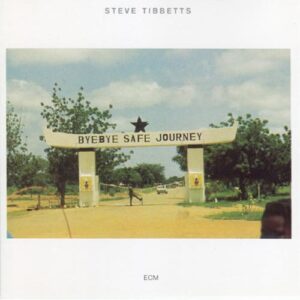
Im „Downbeat“ stand damals eine Rezension (4 1/2 -Sterne), in der ein paar Vergleiche gezogen wurden, munter und querbeet. Leicht behindern solche „Kontexte“ die Wahrnehmung der unheimlichen Frische und Eigenständigkeit seiner Musik. Ein „Ikonoklast“ sei er, sagte mir neulich ein guter Bekannter, und ich lachte. Wir sprachen über seine Kunst und seine „Stories“. Ganz bestimmt würde ich im Deutschlandfunk nicht sagen, Steve sei ein „Ikonoklast“, und lachte noch mehr, egal, wie sinnig dieser Ausdruck sei. Aber dass das neue Album „Close“ ein „instant classic“ sei, das würde mir leicht und in bestem „Anglodeutsch“ von dem Lippen gehen.
„Close“ ist ein „instant classic“. Just give it some time…😉
Und this is the tracklist from „Close“… and there‘s a rhythm in it, for sure…. in den Klanghorizonten am kommenden Donnerstag spiele ich daraus: Away, Part 3, We Begin, Part 3, sowie Away, Part 1…
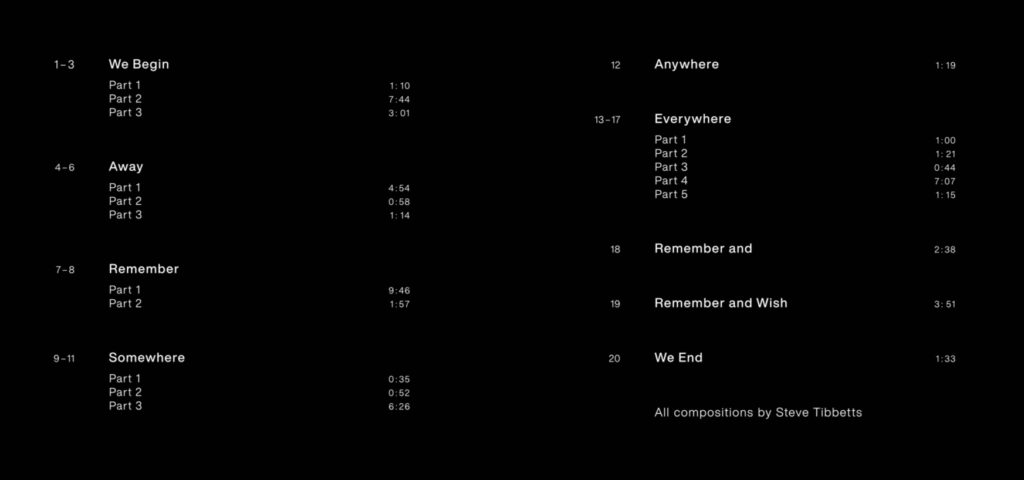
Ich schweife ab, egal. Übrigens, ein paar diskret eingestreute „field recordings“ schlichen sich in das Stereopanorama von „Safe Journey“.
„Each piece on Safe Journey is a textural construction, a layering of sounds, rhythms, and ideas. The fundamental concepts are primarily Western – bits of folk music, rock, jazz, and modern classical – but Tibbetts‘ use of repeating figures and cyclic structures brings to mind the Indonesian gamelan music that influenced Steve Reich. Tibbetts‘ guitar playing is rooted in familiar folk and rock techniques. When he chooses to overlay distorted power chords with screaming single-note lines, it is easy to hear the legacy of Jimi Hendrix. His use of space and long sustaining passages, though, suggests early Pink Floyd and Soft Machine, and some of his layering and tape manipulation recalls the experiments of the Beatles (think of Strawberry Fields).“ (downbeat review, excerpt)
„Twilight language and warm running sunlight“ – die Klanghorizonte (DLF) vom 25. September
special guests: Ludwig Berger and Steve Tibbetts
INTRO: Some people, listeners, have a story to tell with „field recordings“ that trigger encounters with some of the most adventurous sounds being „out there“. Some of those albums became famous (remember the one with those singing whales!), some very much stayed under the radar (very much like the spaces they had been exploring). Even the so-called well-known can turn into stranger things.
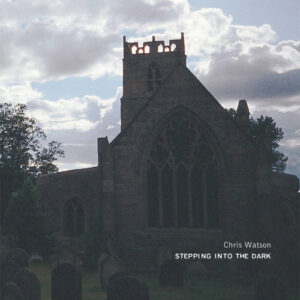
By chance, I once discovered an old album named „Trains in the Night“ beautifully capturing the sounds of old locomotives in England‘s vast hinterland, and the nature around. Listening to the compositions of artists like Jana Winderen BJ Nilsen, Chris Watson or Ludwig Berger, is always a special experience. Is the howling of the wind real, or enhanced by electronics? How can someone „document“ sounds that cannot be be heard within our „normal“ range of perception? In a way the act of „cartographing“ distant areas includes sharpened senses, adequate tools – and inventiveness. When I was sinking, literally, in some of these albums of „field recordings“, I couldn‘t help but remember, in moments passing by, old sci-fi movies, but from minute to minute I was more and more drawn into the sounds themselves and forgetting my sepia-tinged nostalgia. Where-am-I-music of a rare kind! Three field recordings turn up in my forthcoming hour of KLANGHORIZONTE! (this Intro is an updated version of my introduction for an interview with Jana Winderen – you can read it HERE!)
And here we go, dear music lovers…an hour filled with discoveries, re-discoveries, field recordings and conversations! Surprisingly there is even a short appearance of a Jefferson Airplane song, called „Rejoyce“. HERE it is!

“Without climate protection, it is likely that Ludwig Berger’s recordings will outlive alpine glaciers”, warns the film in its last shot, showing the valley overtaken by greenery. It is not exaggerated. The ice carried the planet’s history for millennia yet it is disappearing at an alarming rate. As a response, the album invites listeners to relate to the glacier as a body, filled with life, here gently auscultated by Berger’s hydrophones. With „crying glacier“ and its intrinsic more-than-human collaborative nature, Ludwig Berger amplifies the Morteratsch Glacier’s voice to emphasize its personhood, and other glaciers‘ urgent need for recognition and preservation.“ (from Ludwig Berger‘s Bandcamp page)
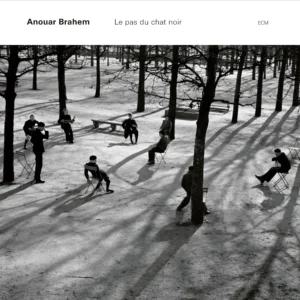
P.S. I was asking Lloyd Swanton, the bass player from The Necks, about some of his favourite ECM albums and more, and here comes his answer… (übrigens, The Necks spielen am 30. Oktober in Aachen und einen Tag später in Berlin)
Redding Road, Dogwood Coffee Shop & a sunset in 1963
„jetzt tauchen die sichtbaren Teile / der Geschichte auf, eine Folge von flimmernden Resten, / die zum Wiedererkennen aufbewahrt / und hervorgeholt sind.“ Es gibt schon einiges zu entdecken, wenn man das Cover der neuen Pan American-LP, von beiden Seiten, auf sich wirken lässt. Obwohl es Americana Ambient ist, konnte ich, weil beides von den Rändern unserer Welt erzählt, an meinem Geburtstag dazu einen alten Gedichtband von Jürgen Becker hernehmen, um zwischen Worten und Klängen zu pendeln. Eine Zeitlinie zwischen 1970, 1980, und 2024. In den Sounds, in den Zeilen versank ich, abwechselnd in die Musik, die Wortbilder, zuweilen gleichzeitig in beides.
„Reverberations of Non-Stop Traffic on Redding Road“ heisst die Arbeit von Pan American & Kramer. Ob die beiliegenden Fotos uns Redding Road am Abend zeigen? Das Gesumm von „distant traffic“ scheint Eingang in eines der Stücke dieses allerfeinst gearbeiteten Albums gefunden zu haben. Here‘s one track: „The Miner’s Pale Child’“. The calming guitar drones and swelling tones paint a serene picture. Kramer calls this piece „a wordless love letter to WS Merwin, the great American poet of nature and peace – the great champion of the weightlessness of words.“ (Gestern schickte uns Steve Tibbetts einen Gruss, und ich habe gleich den Dogwood Coffee Shop gegoogelt, in dem er hockte. In St. Paul, MS. Vielleicht ist Redding Road gar nicht so weit entfernt.)
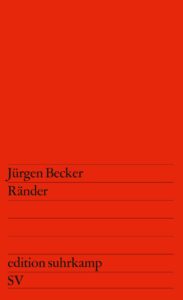
And so it happened I was dreaming about two imaginary albums within the last days: the next Brian Eno song album (his response from some days ago, on flowworker, made it sound a bit less imaginary). And then there’s the idea of an album by Marc Johnson and Steve Tibbetts, chants of sorts (a little more imaginary, but in autumn 2024 a matter of serious discussion, hopefully). A propos „imaginary“, „time lines“, & „memories“ Eine Deepl Überdetzung von Brians Lied „All I Remember“, kaum korrigiert, liest sich so: „Alles, woran ich mich erinnere, wenn ich mich sammle, ist / Ein einsames Feuerwerk, das über einem unergründlichen Meer aufblitzt / Ich versuche, mich an all die Schätze zu erinnern, die ich in jenen Tagen fand / Aber die Verbindung ist schwach / Und der Moment ist im Dunst verloren / Neue Gefühle zu spüren / Ketty Lester, Dee Clark, Bobby Vee / Über den Deich hinaus in die Dunkelheit / Wo der Fluss zum Meer wird / Flackern in Fenstern mit 40-Watt-Birnen und TV / Das Schwirren von Mücken auf einer Wiese, Sonnenuntergang 1963.“
Auch das wiederum handelt von den Rändern unserer Wahrnehmungswelten, wie einst, expressis verbis, ein Lyrikband des Altmeisters. Das Gedicht, dessen erste Zeilen ganz oben zu lesen sind, endet so: „Die Reihenfolge ist wieder ganz anders; / anfangen kann man mitten im Sommer, / unter Lautsprechern zwischen Bäumen.“ Wie geschehen einst auf einem Workshop mit Moebius und Harmonia, Musik von den üblichen Verdächtigen, nahe Forst im Weserbergland. Das ist eine andere Geschichte.
Nicht unter dreissig Seiten, so eine Nacherzählung. Und dann müsste alles fiktionalisiert werden, die Namen zumindest, und in kleinen Episoden, sollte es gut gemacht sein, ein Nachhall geschaffen werden. Tatsächlich ist die Weser kein gemächlicher Fluss, und es bedurfte schon kundiger Hilfe, die guten windgeschützten Orte für das Baden und die Boxen zu finden. Nirgends tauchen in Forst museale Zonen auf, von den Relikten aus alter Zeit ganz zu schweigen. Keine berühmten Sonnenschirme, nicht mal die Bäume vom Cover von „Sowiesoso“. Wir wären ja auch verrückt gewesen, Bäume zu suchen. Auch von dem berühmten Bordell im Wald, ein Edelkurtisanenbetrieb alter Schule, mit Stil, Klasse und exotischen Schönheiten, war Dorfältesten nicht mal ein „Es war einmal“ zu entlocken. Das halbe Dutzend der Einheimischen hatte die 80 satt überschritten, und war mehr im Vergessen als Erinnern angekommen. In einem anderen Dorf gab es eine gesicherte Feuerstelle, die keinen offenen Brand zuliess, und wir karrten die Scheite zusammen, stöpselten die Boxen ein, holten den Strom aus einem still gelegten Wirtshaus, und liessen uns von den beiden Harmonia-Platten umrauschen. Der Wein ging rum, das Haschisch, und alle schliefen im Umkreis von zwei Kilometern. Zuvor aber hielten uns das Feuer und die Dämmerung und die Musik gefangen, und jeder erzählte eine andere Story.